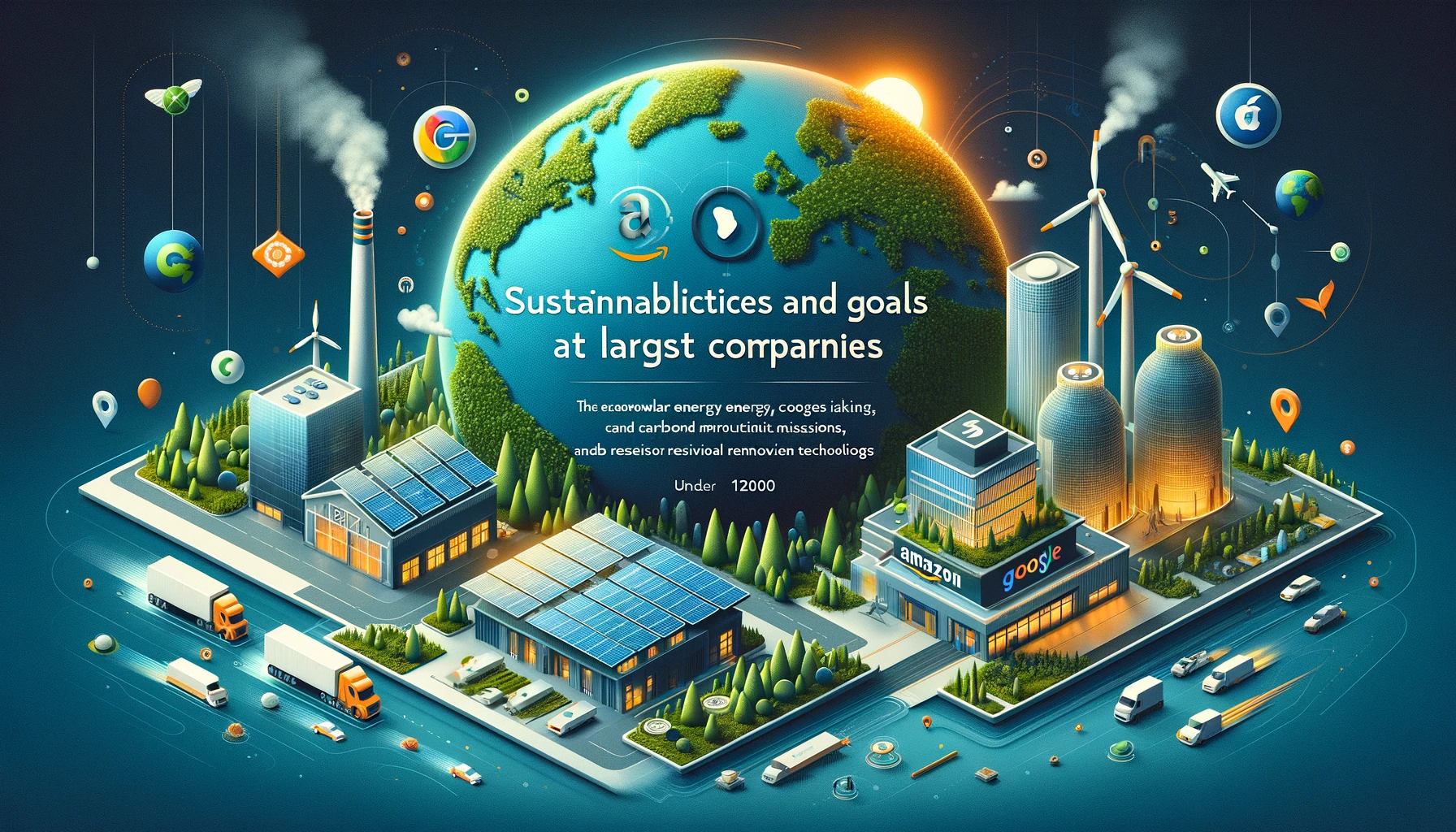In today’s business world, eco-friendly practices are no longer optional—they’re essential. Companies across the globe are weaving sustainability into their core operations. From small startups to multinational corporations, everyone is racing to adopt green initiatives. This guide will walk you through seven key steps to help your business go green, improve your brand’s reputation, and contribute to a healthier planet.
Understanding Eco-Friendly Business Practices
Sustainable Strategies
Eco-friendly business practices aim to reduce environmental impact while maintaining profitability. They include methods like reducing waste, conserving energy, and minimizing carbon footprints. Start by reviewing your operations to identify areas for improvement, such as switching to renewable energy or implementing recycling programs.
Triple Bottom Line
The triple bottom line approach focuses on profit, people, and planet equally. This means businesses strive for economic growth without compromising social equity or environmental health. For example, supporting local suppliers can boost the economy and ensure eco-friendly practices.
Corporate Responsibility
Corporate social responsibility (CSR) emphasizes making a positive impact on society and the environment. Businesses now report on their sustainability efforts through annual CSR reports, showing transparency and commitment to environmental stewardship.
Educating Employees on Green Initiatives
Training Programs
Your employees are key to implementing eco-friendly practices. Offer training programs that cover waste reduction, energy conservation, and efficient resource use. This ensures your team understands the importance of sustainability and how to apply it in their daily tasks.
Incentive Schemes
Rewarding eco-conscious behavior can boost participation in green initiatives. Implement a points system where employees earn rewards for sustainable actions like recycling or using public transport. Incentives can range from extra vacation days to gift cards for eco-friendly products.
Success Sharing
Share success stories of green initiatives within your company. For example, if a team reduces paper usage by switching to digital processes, publicize this achievement. Highlighting metrics such as reduced carbon footprint or cost savings can inspire others to adopt similar practices.
Launching a Product Takeback Program
Benefits Realized
Product takeback programs reduce waste by enabling the recirculation of materials. Customers return used products, which you can refurbish, recycle, or safely dispose of. This not only cuts down on landfill contributions but also enhances brand loyalty.
Implementation Steps
Start by deciding which products to include and establish collection logistics. Partner with reliable recycling firms and promote the program effectively. Incentivize returns with discounts or loyalty points to encourage participation.
Success Stories
Many companies have pioneered successful takeback programs. For instance, a leading athletic wear company recycles old sneakers into playground surfaces and running tracks, demonstrating commitment to sustainability and community health.
Switching to Renewable Energy Sources
Economic Benefits
Renewable energy sources like solar and wind power can reduce energy costs and shield businesses from volatile fossil fuel prices. Government incentives like tax credits can offset initial installation costs, leading to long-term savings.
Transition Guidance
Start by auditing your current energy use. Explore local renewable options and consider partnering with sustainable energy experts to guide you through the transition. They can help identify cost-effective solutions tailored to your needs.
Success Stories
Companies like Google and IKEA have made significant investments in renewable energy. Google reached 100% renewable energy for its operations in 2017, and IKEA aims to produce as much renewable energy as it consumes by 2020. These examples show that even large corporations can operate sustainably.
Partnering with Environmental Nonprofits
Strategic Advantages
Collaborating with environmental nonprofits enhances your brand’s reputation and leverages specialized knowledge in conservation efforts. These partnerships can lead to innovative products and services that benefit the planet.
Choosing Partners
Select nonprofits with a proven track record in areas relevant to your operations. Ensure compatibility in values and goals, and conduct thorough research before committing. Engaging stakeholders in the selection process can provide valuable insights.
Community Impact
Partnership initiatives often have profound effects on local communities, raising awareness about environmental issues and inspiring sustainable lifestyles. This ripple effect amplifies the positive impact, creating lasting change.
Encouraging Staff Volunteerism for Sustainability
Team Engagement
Organize volunteer events like clean-up days at local parks or beaches to support sustainability initiatives and foster team unity. These activities provide powerful shared experiences that turn colleagues into conservation allies.
Skill Development
Volunteering offers opportunities to develop new skills and think creatively. Employees might learn about native plant species or sustainable farming practices, bringing fresh perspectives back to the workplace.
Community Connection
Encouraging volunteerism helps build ties with local communities. Companies that engage in service projects demonstrate their commitment to being good neighbors and stewards of the environment.
Rethinking Supply Chain Sustainability
Sustainable Sourcing
Prioritize materials that cause minimal environmental harm. Sustainable sourcing can reduce long-term costs and attract eco-conscious customers. For example, switching to suppliers who provide recycled packaging materials can significantly lower your environmental impact.
Audit Strategies
Conduct regular audits to identify areas for improvement in your supply chain. Set clear goals for reducing your carbon footprint and track progress. Partnering with third-party auditors can bring impartiality and expertise to the process.
Carbon Reduction
Innovative approaches like optimizing logistics and implementing circular economy principles can reduce supply chain carbon footprints. Circular systems turn waste into resources, cutting down on emissions and material costs.
Adopting a Circular Economy Approach
Circular Basics
A circular economy rethinks traditional consumption by designing goods to last longer, be reused, remanufactured, or recycled. This model reduces waste and environmental impact, promoting sustainability and building brand loyalty.
Integration Steps
Start with product design, choosing durable and recyclable materials. Streamline production to reduce waste and explore partnerships for resource sharing. Training staff on sustainability practices ensures everyone is on board.
Success Stories
Companies like Patagonia and Dell Technologies have embraced circularity. Patagonia’s Worn Wear program encourages customers to buy used items or trade them in, while Dell recycles parts from old devices into new ones. These examples show that adopting a circular economy can be profitable and sustainable.
Final Remarks
Eco-friendly business practices are not only good for the planet—they’re smart for your bottom line and brand reputation. Whether it’s launching a takeback program or switching to renewable energy, every step towards sustainability makes a difference. Your business has the power to lead by example, inspiring others and making a positive impact on the planet. Start small, think big, and act now for a greener future.
Frequently Asked Questions
What are eco-friendly business practices?
Methods and strategies that reduce a company’s environmental footprint, such as using renewable energy and reducing waste.
How can companies educate employees about green initiatives?
Hold workshops, provide resources, and incentivize sustainable behaviors to educate your team.
What is a product takeback program?
A program where a company recycles or reuses its products after consumers have finished using them.
Why should businesses switch to renewable energy sources?
Renewables cut greenhouse gas emissions and can save on long-term energy costs.
How does partnering with environmental nonprofits help businesses?
These partnerships boost credibility and impact through expertise sharing and joint projects.
Can encouraging staff volunteerism benefit a company’s sustainability efforts?
Yes, it fosters community engagement and enhances the company’s eco-conscious image.
What does rethinking supply chain sustainability involve?
Evaluating suppliers’ eco-friendliness, optimizing logistics for lower emissions, and using sustainable materials.
What is adopting a circular economy approach in business?
Designing products for longevity, reuse, and recycling, minimizing waste throughout the lifecycle.
Are there any success stories of businesses that adopted eco-friendly practices?
Yes, many companies have successfully integrated eco-friendly practices, demonstrating both environmental and economic benefits.
















